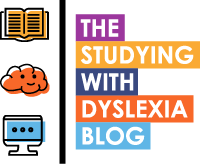In my last post I announced the winner of the 2019 Christmas Competition that I ran which asked participants to share their experiences of supporting a child with dyslexia with assistive technology. As I read through the entries, one of them shared that they used a specific piece of software to recreate educational content into a comic book format. So in this article I would like to explore some thinking as to why this could be so useful for dyslexic learners.
The comic book intro above was put together in a programme called Comic Life 3, which was the software that the entry mentioned. I got in touch with the Plasq who develop the software asking if I could take a look at it. They very kindly gave me a copy and so I had a play with it.
In the past I have explored organisations who provide comic based educational content and how in providing a fresh and entertaining way to look at that content it somehow helps to boost learning. I guess it just makes it more memorable rather than the standard linear way that educational content is so often presented that is so often a challenge to helping dyslexic learners who are more non-linear in the way that they think and learn.
So if a ‘comic format’ is engaging, would it be useful to encourage children to use this format to put revision materials together?
I want to stress that I am not an educator, I don’t have any teacher training and I am not a level 7 trained specialist dyslexia teacher and so this blog article is more of an exploration of the topic rather than a recommendation.
I did however come across a publication by Jeanette Combs at the School of Education , Curriculum and Instruction, College of William and Mary in the US. She had the following to say about using comic formats in learning:
The key benefits of using comics in education.
A great visual Representation of Knowledge
Presents what is essential
Easier to remember a visual graphic containing key information
Engaging through thinking, creating and writing.
Perfect avenue for writing dialogue
Incites students with low interest in writing
Helps organization through storytelling and storyboarding
Using visual images convey meaning to a story or topic
Develops creative and higher level thought processes
Develops composition techniques through visual-verbal connections
Enriches reading, writing, and thinking
Serves as and assessment and evaluation tool
Sequencing promotes understanding
For me, I can see that a student (dyslexic or not) in a similar way as mind mapping can put together a narrative on a topic using the essential language (rather than being too wordy) along with pictures to secure understanding of the main topic. The dyslexic thinker has less text to process and the pictures help to fill out the story thus making it more memorable.
So whether an individual uses software or just pen and paper, they could use all their lovely dyslexic creativity to come up with materials that help with the processing of complex information or topics. It is a way to learn in a different way that is just as effective.
Some organisations are reporting that they are using comic books to in medical schools to help with learning. So it appears that this is a format that isn’t just for young people but can span ages for people who are learning.
Just for fun…
Does your child or young person use their creativity to put together revision or learning materials to help them understand educational content?
The friendly people at Comic Life have offered me two licenses for readers of this blog who may want to use comic book strips to help with learning.
So to be fair and given that this blog has many more than two readers, I would like to pose a fund competition. If you are supporting a child or young person with their learning, can you get them to put their own comic strip together for an educational concept and then send it to me by clicking here. I will take a look at the entries and post some of them on the blog and the two that I enjoy the most I will get them a license for Comic Life 3. In fact, Comic Life 3 can be used for 30 days as a trial so if you want to try it out and see what you come up with then do but equally, pen and paper (send me a photo of) is just as great.
I am interested in the creative aspects of learning more than how it was done.
The closing dates for entries is the 1st March 2020 at midnight.




